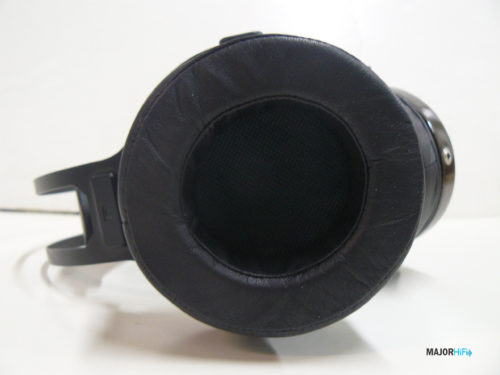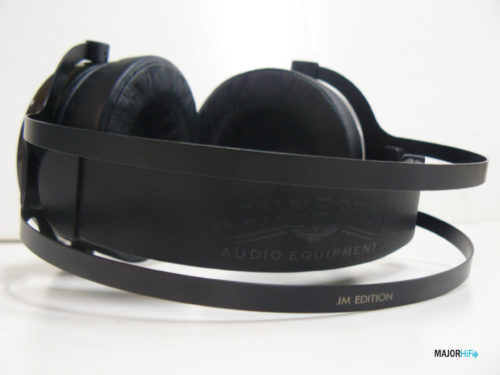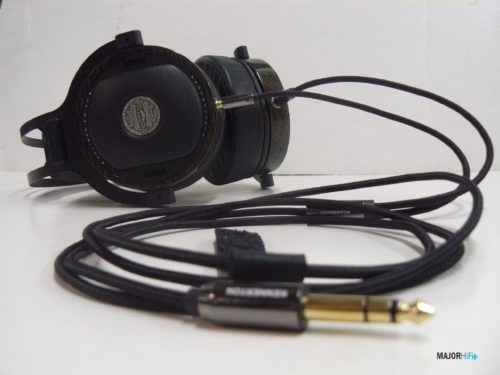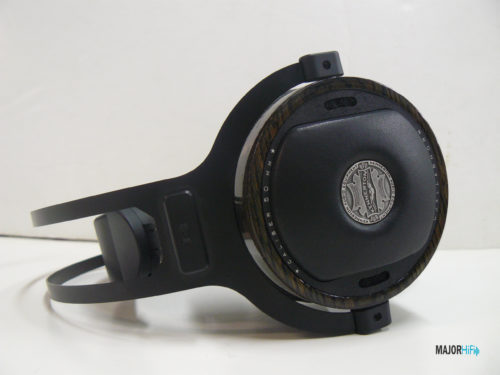It is time to introduce a new brand to MajorHiFi. The start of 2021 has brought us a slew of new items from a couple of well-known manufacturers that aim to make an immediate impression to kick off the year. This leaves some not as established brands to fall under the radar, which is a shame considering the level of quality these names show. Kennerton has racked up a considerable amount of praise for its selection, but they haven’t been the easiest headphones to acquire in the United States. That has now changed.
I’ve finally gotten my hands on one of these hyped-up headphones, the Gjallarhorn GH 50 JM edition. There’s also a standard edition that I will be reviewing here as well. From what I’ve read these headphones are uniquely constructed, and house a great number of elements that are unusual for a closed-back headphone. The $1349 price tag can be a bit intimidating, especially from an otherwise known brand, but can the GH 50 JM be enough to prove Kennerton a name worth looking out for?

What You Get
There are few extra accessories included when you purchase the GH 50. In the box, you’ll receive a large, eco-leather carrying case that contains all the headphones necessary items. That being the GH 50 JM themselves, and its 2 meter OFC cable. This cable features rhodium-plated dual connectors, both 3.5mm termination, and a gold-plated quarter-inch connector at the end.

Look and Feel
From what I can tell, Kennerton headphones have very complex builds that sport various materials. The GH 50 JM uses wooden cups that appear carefully crafted and finished with a shiny resin. My model was in the dusk coloration that I feel blended with the headphone’s aesthetic a lot better than the lighter version, but they both look great. The lambskin leather cushions are going to be hard not to be immediately fixated with, as they take up a large portion of the frame. They’re soft, and when you press down on them they almost feel like air.
A similar sentiment can be said about the headband as well, which uses a suspension method. However, unlike other brands that just use a piece of fabric, the GH 50 uses a full, cushioned headband that provides little to no added pressure to the fit. All of this is supported by a metal yoke and headband for a durable build.
While I enjoyed the GH 50’s superb level of comfort, there is an aspect to it that cannot be avoided. While the fit is comfortable, the headphones might not feel like they’re on properly at first. I didn’t feel bothered by this, but I completely understand the flaw here after reading about people’s issues online. The headband must be bent for the earcups to provide enough security to your ears. This will also affect some of the sound signature as we’ll discuss later on.

Design
One of the most unique features of Kennertons’ headphones is its driver unit. The GH 50 doesn’t use your standard dynamic or planar driver. Instead, Kennerton uses a 50mm horn driver, one of the first in the world. What makes this makeup so special is its ability to control sound pressure with superior dynamics. Subtle details are said to be more accurate to the image and have a wide directional pattern. With that, there’s also the graphene diaphragm, which is said to be 300 times stronger than steel and with no internal resistance making the headphone incredibly light.

Output
Although the GH 50 only features a low impedance of 33 Ohms, the headphones only include a quarter-inch termination, and still, require some significant power to get these headphones to a comfortable level. I had to set my Zen Can boost to 18dB of gain before I got the GH 50 to produce a sufficient signal that had enough volume to feel like I still had some room for adjustment.

Soundstage
There’s a sentiment that closed-back headphones don’t have the greatest soundstage compared to open-backs. I’ve been hearing a lot of things about Kennerton, but one of the most popular assessments is that their closed-back models have the best soundstages for their principle. From what I can hear from the GH 50 JH, the praise is completely warranted. The GH 50 JM features some of the widest and deepest imaging currently available on closed-back headphones.
The GH 50 JM excels in some massive separation and layering that expands the spatial imaging to an extreme degree. It almost reaches the holographic sensation of an open-back, with its outward headspace and sounds that appear like they’re emanating from a true source and not the driver. Vocals resonate like they’re being performed in front of you, the singer being more in your face than in the middle of your head. In this regard, I don’t think there has been a better closed-back for live music, as the stage is exceptionally communicated with accurate positioning and immersive imaging.
Low End
It should be assessed that the JM edition of the GH50 has a different acoustic makeup that significantly alters the tuning of the headphone. The bass response on the JM edition showcases a tight and clean resonance. The detail is delivered with a natural timbre and a smooth tonality that portrays the lows as more delicate and graceful than meaty and impactful. Because of the incredible separation and imaging, the lows can play with these dynamic textures while easily discernable from the frequency response. It exudes enough extension that provides a sufficient bass-feel, with vibrating textures and a sweet, smooth, and clear response.
Mids
I didn’t find the midrange to be as consistent as the lows, but when the frequencies are given the chance, they soar. A lot of the depth in the imaging is greatly represented in the mids, bringing a crisp interpretation of detail. The way the mids are spaced out places them in almost 3D stacks, with low-mids and high-mids placed evenly one on top of another. Elements like background vocals emanate from the back with a respectable amount of clarity, operating with a significant amount of weight. These frequencies don’t make the sound signature and richer, but they do add a certain amount of body to the timbre.
Highs
The timbre of the highs on the GH 50 JM features some of the most textured and pleasant responses in the sound signature. How certain treble elements sizzle and tail off is done with an excellent level of rigor and attentiveness, highlighting percussion instruments and reverb tails. The track “Brume” by Mika Vainio and Franck Vigroux feature this sound effect that reminds me of a water droplet saturated with noise and reverb. On the GH 50 JM, this effect is so well defined that it made me twitch each time it occurred. A similar effect happens in the very next track “Ne te retourne pas” which plays this crinkling noise that was so crisp and realistic. The highs add so much personality to the sound signature and make the overall timbre feel complete.
Summary
The GH 50 JM is quite the experience. If Kennerton wasn’t a name you originally recognized, it should mean something now. This headphone is so carefully constructed in its build, and that’s completely reflected in the sound signature. It might take some major break-in to get used to the feeling of the GH 50, but once that’s done, you should experience one of the lightest and most comfortable headphones available today. For the price, it’s worth looking into, especially if you’re itching for an audiophile headphone with some personality.
Pros and Cons
Pros: Soundstage depth, Natural bass, Great treble, Build quality
Cons: Headband

The Kennerton Gjallarhorn GH 50 JM is available at Audio 46.
Discuss the Kennerton GH 50 JM on our forums here.
MAJORHIFI may receive commissions from retail offers.








